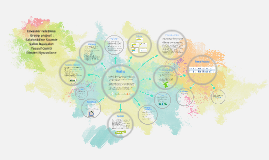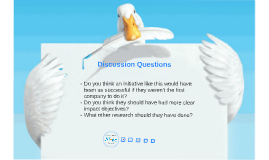Investor Relations
Transcript: Companies should lay out information in detail. To stand a better chance of achieving a fair valuation in the market place, they should describe and quantify what they are doing, supported by financial metrics. a. Straight-forward strategy for growth b. Clear product and go-to-market messaging c. Strong and credible management team • Best IR programs in today’s environment must help investors and analysts understand a company’s earnings potential, and how the company plans to reach the potential. • Credibility – the most important aspect of any IR program a. Top-and bottom-line growth b. Segmental information c. Future growth > it describes the ways in which rights and responsibilities are shared between the various corporate participants, especially the management and the shareholders. 2. Increased Power of Institutional Investors 4. Manage Expectations • Arrange periodic group meetings with analysts and institutional investors. The presentation at this meeting should be brief and to the point. The investment community is concerned about philosophy as well as financial results. Seven Categories of Information Investors Requirement No two IR programs are going to be exactly the same because so much of this effort depends on the kind of company, its industry, size, and so on. Yet, over the last several years, some of the lessons that we have learned from applying basic communication strategy to this effort have helped the field become a more mature professional part of the corporation. 3. The idea is to systematically build an intelligence file, the starting point being the contacts you already have. This file can then be incorporated into a unique database which would be consistently updated. 1. IR must ensure that the stock price is appropriate for the earnings prospects, industry outlook, and the economy. 3. Company Dynamics Investor Relations 4. Support senior management in making strategic decisions based on valuable feedback from the investment community. 2. Form 10-K DEVELOPING AN INVESTOR RELATIONS FRAMEWORK • According to Thomas Garbett, the concept of investor relations as a separate business function started at General Electric over 40 years ago. Despite the increased power of institution and incomprehensible value of pension fund asset, experts see the investment trend moving away from equities as this decade progresses. The growth institutional assets, expands the market for equities, but the larger the asset bases become, the more likely it is that some institution will turn to passive management. These trends certainly put the burden on IR to find creative ways to market the company’s stock. a. Transparency of financial information and disclosure b. Availability and openness towards investment community c. Equal communications of good news and bad news d. Quantification of strategic objectives and goals 2. IR must limit stock price volatility. Perceptions of the Company + Cooperation of Senior Management = Objectives of IR Program What Investors want to Know > The level of performance of a business over a specified period of time, expressed in terms of overall profits and losses during that time. > It is the general prevailing attitude of investors as to anticipated price development in a market. This attitude is the accumulation of a variety of fundamental and technical factors, including price history, economic reports, seasonal factors, and national and world events. By the late 1960’s with the establishment of NIRI, the modern investor relations function began to emerge. Early 1970’s until the early 1980’s, IR purpose was to distribute basic financial publications to brokerage firms, securities analysts, and shareholders. The SEC became increasingly interested in what companies did and did not tell the investing public. IR professionals should analyze the mix of individual and institutional holders. Depending on the company, this mix may be worth changing. Data bases that are easily accessible are full of information on institutional stockholdings, turnover rates, and basic portfolio characteristics, which IR can use to identify those institutions that might be interested in the company’s stock. • From 1982-1987, the “bull market” forced the IR to change once again. IR’s role expanded with the growth of market participants and trading volume. • The stock market crash in October 1897 catapulted IR into the current stage. Investor Relations (IR) is a strategic management responsibility that is capable of integrating finance, communication, marketing and securities law compliance to enable the most effective two-way communication between a company, the financial community, and other constituencies, which ultimately contributes to a company's securities achieving fair valuation. The term describes the department of a company devoted to handling inquiries from shareholders and investors, as well as others who might be interested in a company's stock or financial stability. IR can target

















